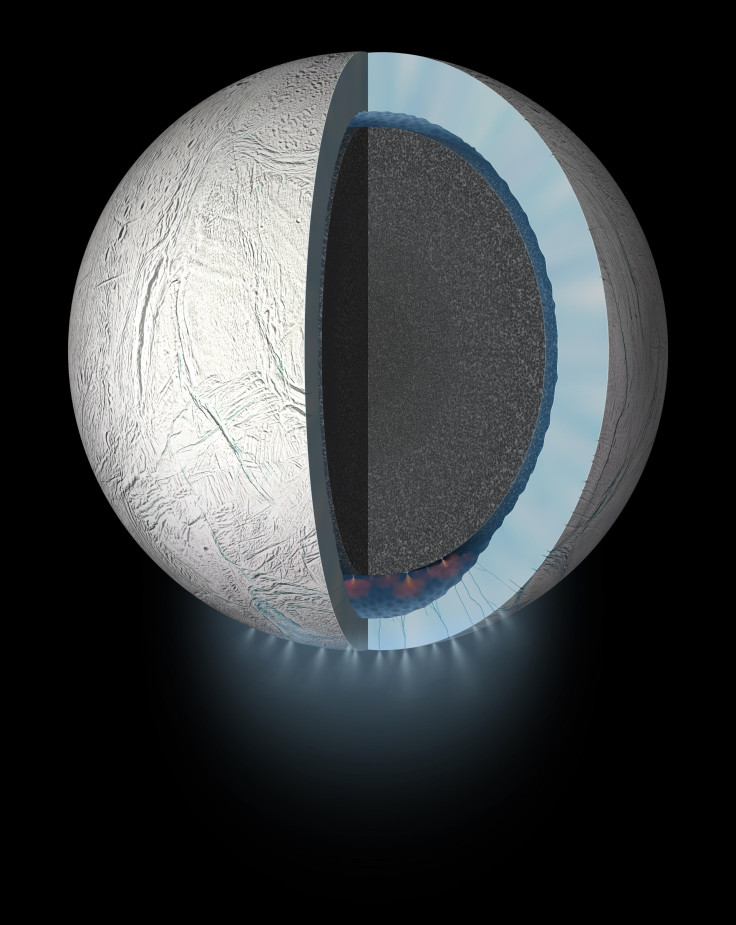NASA Spacecraft Cassini Watches Saturn’s Moon Fart Before Its Death Plunge

NASA’s doomed Cassini spacecraft watched a moon of Saturn fart one last time, sending back a home movie of a plume blasting out of the bottom of Enceladus.
The plume is a key point of interest for scientists who are searching for alien life and trying to better understand what makes worlds habitable. Superficially, the cold Enceladus seems like it would not be a target for those researchers, but Cassini has sent back data indicating that the water originating in a subsurface ocean and jetting off the moon around its south pole is full of organic molecules and could be coming from a place where there is warmth.
“Two of our instruments actually sampled the plume of Enceladus as we flew through, tasting the gas, measuring the particles in a way that we hadn’t planned,” Cassini project scientist Linda Spilker said in a NASA video, about past observations of the plume.
Even though Enceladus is not within the solar system’s habitable zone — the distance from the sun where there is just the right amount of heat to support liquid water — it may still be capable of supporting some form of extraterrestrial life, and suggests other worlds that may appear uninhabitable could also be full of surprises.
“Cassini has changed the paradigm of where we might look for life,” Spilker said. “That will be one of her legacies.”
During its final days roaming around the outer solar system, Cassini observed the scientific hotspot once again and took several images of the plume over a period of about 14 hours. The spacecraft was between 539,000 and 684,000 miles away from the moon at the time, viewing it on its nighttime side.

NASA’s Jet Propulsion Laboratory referred to the images as the “last dedicated observation of the Enceladus plume by NASA’s Cassini spacecraft.” That’s because Cassini has only a few days left to live.
After launching in October 1997 and giving 13 years of service in Saturn’s neighborhood, Cassini is running out of fuel. In preparation for its death, NASA sent the spacecraft on a “Grand Finale” that took it diving through the gap between Saturn and its rings; exploring Enceladus; and winding through the rest of the planetary system. Cassini will end its own life on Friday morning by taking a plunge into Saturn to burn up, ensuring it goes out with a bang.
As Cassini checked a final view of Enceladus’ plume off its bucket list, it was looking at a moon bathed in sunlight that was reflected toward it from Saturn, according to JPL. During those 14 hours of observations, the light faded away and stars became visible in the background.
Later on Monday, Cassini was due to make one last distant flyby of Titan, another of Saturn’s moons, to help launch it into its final flight that will take it into the ringed planet. Cassini will take its last image on Thursday just before 4 p.m. EDT, then turn its antenna toward Earth to remain in contact with its home world until it dies.
© Copyright IBTimes 2025. All rights reserved.



















